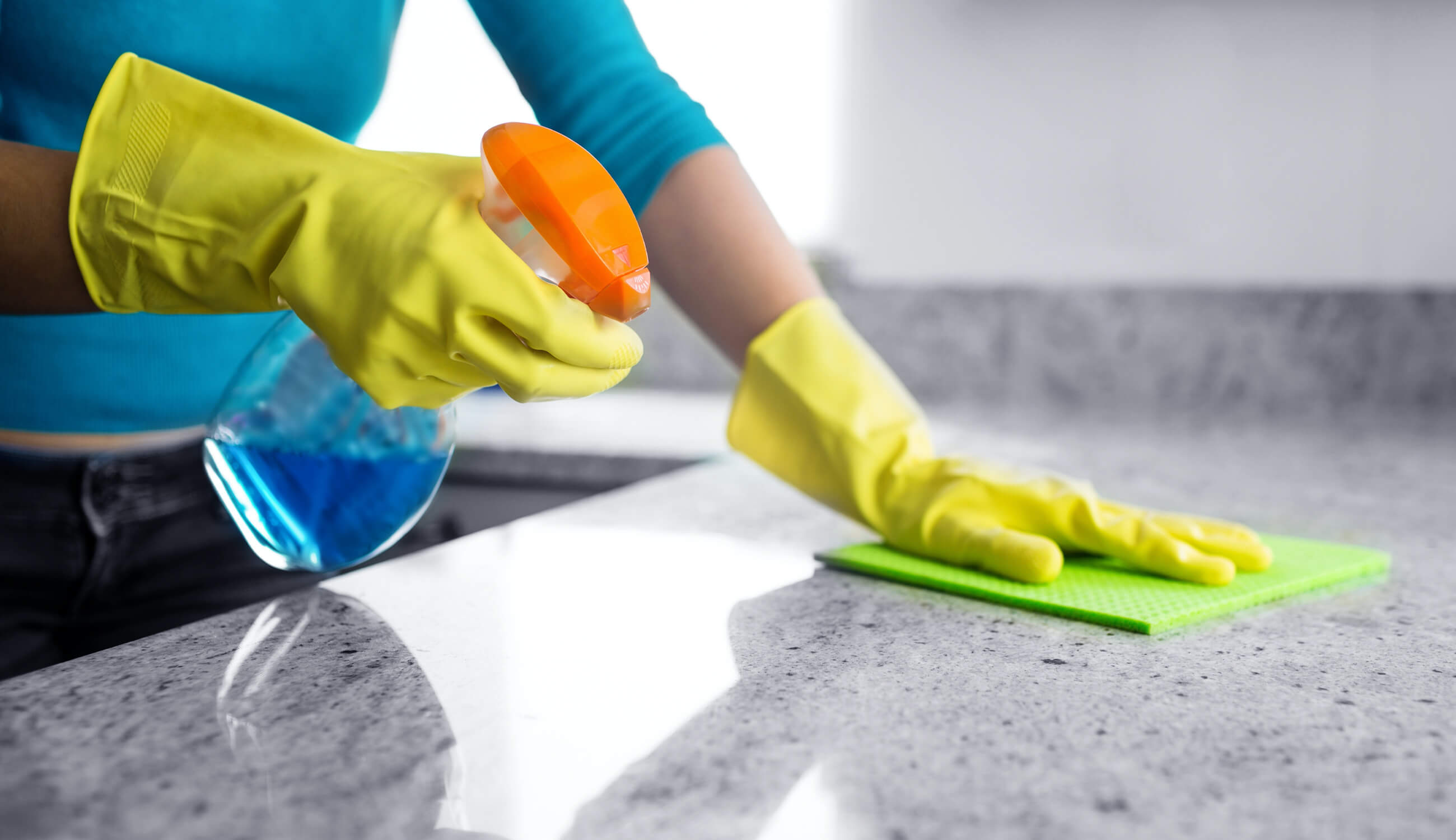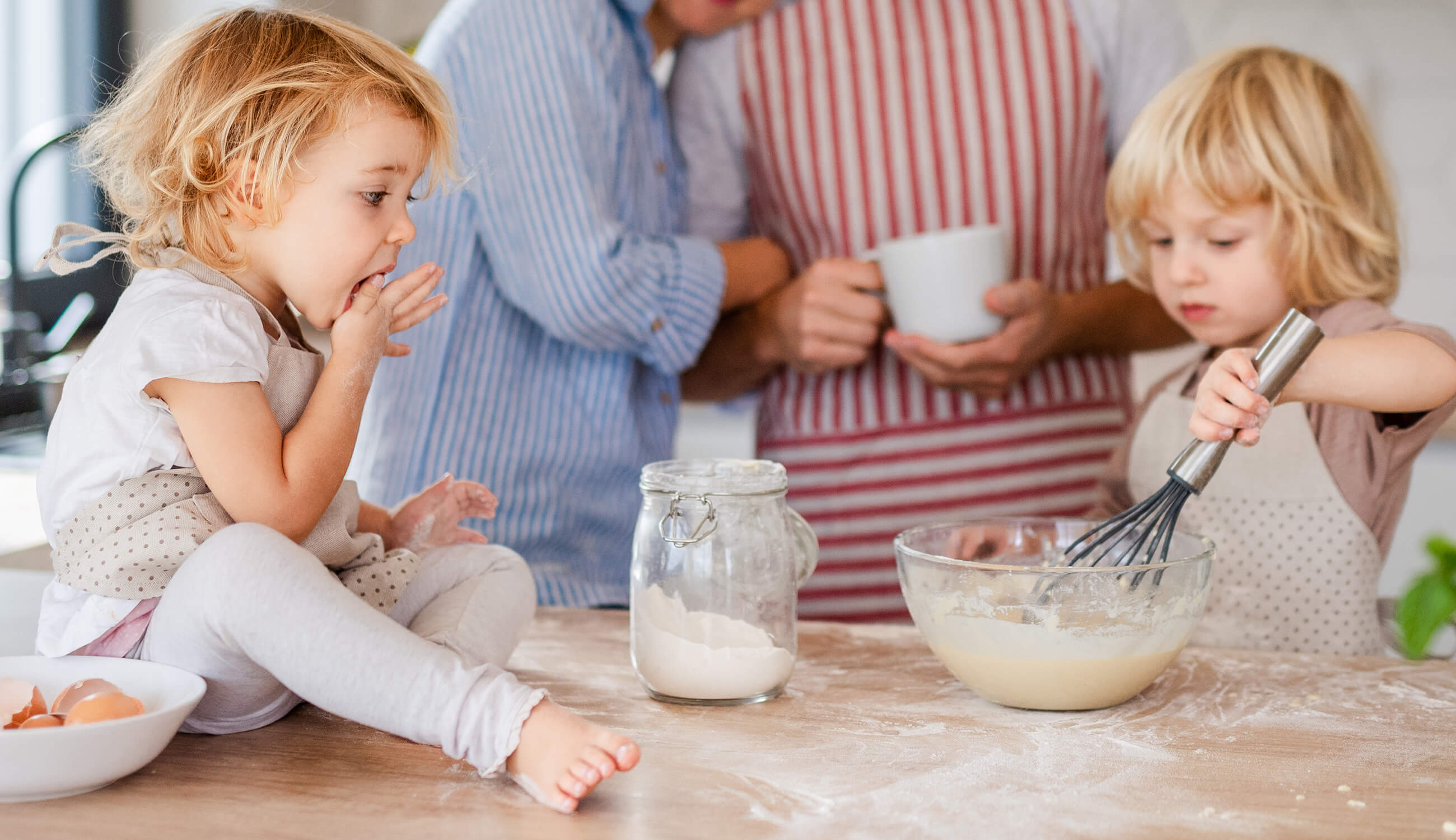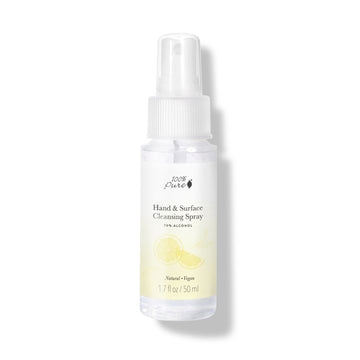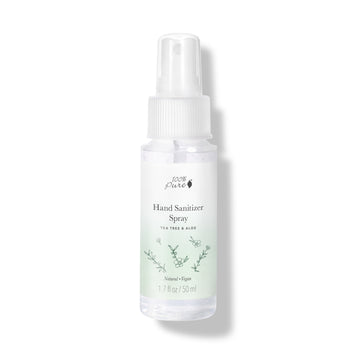The top cleaning ingredients to avoid in your home
Written by: 100% PURE ®
When using hand sanitizers or multi-surface sprays in your home, how can you tell if they’re safe? Natural sprays can gently and effectively combat germs, and some are even gentle enough to be used on both skin and hands.
Our newest Hand & Surface Cleansing Spray is a multipurpose formula that’s useful for wiping down everyday items like your smartphone and keys. With its convenient travel size and clean lemon scent, you can take it anywhere!
If you’re looking for more information on clean and green multi-surface sprays, you’ll have to start by understanding ingredients. Some can be toxic in your home and for pets or children, and should be avoided at all costs.
New to the world of natural household cleaners? We’ll break down must-know facts on using natural vs. toxic cleaning sprays in your home.
When you see the word “natural” on a household cleaner, don’t believe it right off the bat.
This word – among others – is often thrown around by companies that claim to make “green”, “eco-friendly”, or “non-toxic” products. Scanning ingredient lists is the only way to determine if a product is truly natural.
Many multi-surface cleaners contain ingredients such as lye, trisodium phosphate, chlorine bleach, and multiple chemical forms of disinfectant/antibacterial agents. These ingredients can be quite harmful; they can cause irritation on our skin, nose, mouth and lungs. They may also pollute the air and water, as many of them are non-biodegradable and will therefore bioaccumulate in natural ecosystems.
What’s worse is that many of these ingredients are hiding in plain sight, behind packaging that’s deliberately designed to mislead you. So how do we know if a multi-surface cleaner is safe for us, our children, and the planet?
We’ve created a little cheat sheet for your next shopping trip, to help you weed out potentially harmful ingredients in sanitizers and surface cleaners.

Feeling overloaded with information? Here’s a starting point on what to avoid when purchasing household cleaners for you and your family.
1. Ammonia
Ammonia has a strong, unpleasant odor and can be poisonous when ingested. As if that’s not bad enough, it can also burn the skin and can be especially irritating when inhaled. If you have any family members with asthma or respiratory sensitivities, we recommend you keep this ingredient out of the house!
2. Butyl Cellosolve
You’ll most likely see this one in the ubiquitous blue glass cleaners, but it can also be found in a variety of household and multi-surface cleaners.
Also known as butyl glycol, monobutyl, or ethylene glycol, add this chemical to your list of potential irritants when inhaled. It can be poisonous if ingested, resulting in negative effects on the liver, kidneys, and nervous system. In short: keep this one out of your home if you have pets or little ones. If you clean your counters and then let your toddler eat their snack off the same counter... you do the math.
3. Petroleum Solvents
Petroleum solvents – derived from non-renewable fossil fuels – are commonly used as surfactants, meaning that they help lower the tension between two emulsifiers. Through this function, petroleum solvents can also potentially cause damage to mucous membranes, as observed in scientific studies.
Petroleum solvents can be found in a few different cleaning products, but you’re most likely to see them in floor cleaners. Some common names you’ll see on an ingredient list can be: xylene, benzene, trichlorethylene, and trichloroethane.
4. Phosphates
Phosphates are regularly found in detergents, and tend to pose major risks to the environment.
They contribute to algae overgrowth, which can have a negative impact on marine ecosystems. It’s also been shown that over-exposure and inhalation of phosphates can potentially lead to health risks concerning the kidneys, bones, and nervous system.
5. Triclosan
Triclosan is an antifungal and antibacterial agent found in antibacterial soaps and detergents. The FDA considers triclosan dangerous, and notes that it should be avoided in over the counter and household products. In terms of cleaning products, there is no evidence that triclosan is an effective form of defense against bacteria and viruses.
What’s most concerning is that triclosan can potentially promote the growth of drug resistant bacteria, by helping it build resistance. The EPA is currently investigating the function triclosan has on our hormones, while other existing research has linked it to skin cancer.
While it may be nerve wracking to see how many household cleaning ingredients are unsafe, don’t despair! For every toxic ingredient there are plenty of natural ingredients that are both gentle on skin and tough on germs.
We’ve listed a few of our favorite ingredients below, but you can get the in-depth story in our recent blog post: "Natural Ingredients for Disinfecting Your Home".
1. Tea Tree Oil
Tea tree oil is derived from a unique plant known as Melaleuca alternifolia native to Australia. The antimicrobial and antifungal effects of the oil expressed from its leaves have many benefits for skin, and can also be applied to skin and non-porous surfaces for antibacterial effects.
2. Rosemary Essential Oil
Rosemary contains natural preservative properties; from our Mangosteen Whipped Body Butter to our Bamboo Blur Foundation, this essential oil offers potent antibacterial benefits. Rosemary essential oil possesses a wealth of antioxidants, and can be useful against unwanted bacteria and fungi.
3. Lemon Essential Oil
Lemon is easily one of the most recognizable “clean” scent profiles amongst multi-surface cleaners. Its bright, citrusy aroma isn’t the only perk of lemon essential oil – it also has the ability to kill many types of bacteria.
4. White Vinegar
Vinegar is a powerful form of food-grade defense against bacteria, especially when paired with citruses. While vinegar is not as effective as hydrogen peroxide or ethyl alcohol, it can still be effective against most forms of common household bacteria.
It plays an especially interesting role in the technology used by Force of Nature, a company that creates EPA-registered cleaning products. They start with simple ingredients: water, salt, and vinegar. They’re all meticulously measured and jolted with electricity.
This electricity basically causes the atoms in water and salt to scramble, which results in the creation of “super-molecules”. These molecules effectively kill bacteria, while remaining food-safe and impeccably gentle.
5. Ethyl Alcohol
While we realize that alcohol is generally an ingredient we would warn against in skin care, ethyl alcohol is a different story for household cleaners. Like other alcohols, ethyl alcohol works effectively against several pathogens, including fungi, bacteria, and viruses.
Ethyl alcohol is approved by the FDA as a suitable antibacterial ingredient. Unlike its relative, isopropyl alcohol, ethyl alcohol is not made from petroleum. It’s sourced from natural ingredients like sorghum or corn through fermentation, distillation, and filtration.
Ethyl alcohol is one of the key ingredients in our sanitizing products, most notably our Hand & Surface Cleansing Spray. Thanks to a mild blend of aloe vera, glycerin, and essential oils, this spray is suitable for all non-porous surfaces, including plastic, glass, finished wood, and metal.
Knowing about the best (and worst) multi-surface cleaner ingredients is helpful, but familiarizing yourself with ways to prevent the spread of germs is also important.
-
One of the best ways to prevent bacterial spread is to wash your hands with soap and water. Soap breaks down fat and grease, and also breaks down the fatty membranes in viruses that make them harmful.
-
When washing your hands, make sure to always use hot water and soap, and lather the soap and water for at least 20 seconds.
-
Don’t just wash your hands after being outside! Hands should be washed after potentially encountering any bacteria – think cooking, brushing hair, changing diapers, etc.
-
Avoid cross-contamination when cooking by keeping specific utensils and cutting boards together, so that potentially harmful bacteria won’t commingle with other food. A great example of what NOT to do would be: preparing raw chicken with a knife and cutting board, before chopping vegetables with the same tools.
- Tags: Clean Living, Ingredients
We carefully hand-select products based on strict purity standards, and only recommend products we feel meet this criteria. 100% PURE™ may earn a small commission for products purchased through affiliate links.
The information in this article is for educational use, and not intended to substitute professional medical advice, diagnosis, or treatment and should not be used as such.













